How cheap Philips LED lamps differ from expensive ones
Many Russian stores sell very cheap Philips LED bulbs, while other stores sell much more expensive light bulbs of the same brand in boxes of a different design.
I’ll tell you how they differ.

Philips has traditionally very little box information. The first lamp in the photo shows only power, equivalent, luminous flux, operating voltage, “Warm white light” (without specifying color temperature), “Service life of more than 8 years” (without specifying under what conditions), “Minimum ripple level” ( without numbers). The sticker indicates the warranty period of 2 years. There is no information about the color rendering index on the package.
The manufacturer’s website also cannot find the exact specifications: there is only a part of the lamps, and many of the links are broken.
But on the site you can find that Philips has two series of lamps - a cheap “EcoHome” and a standard “Essential”. The first lamp in my photo from the EcoHome series, the second - Essential.
If you carefully study the information on the boxes, you will notice a strange thing: an expensive 9W lamp gives 950 lm, and a cheap one only 650 lm.
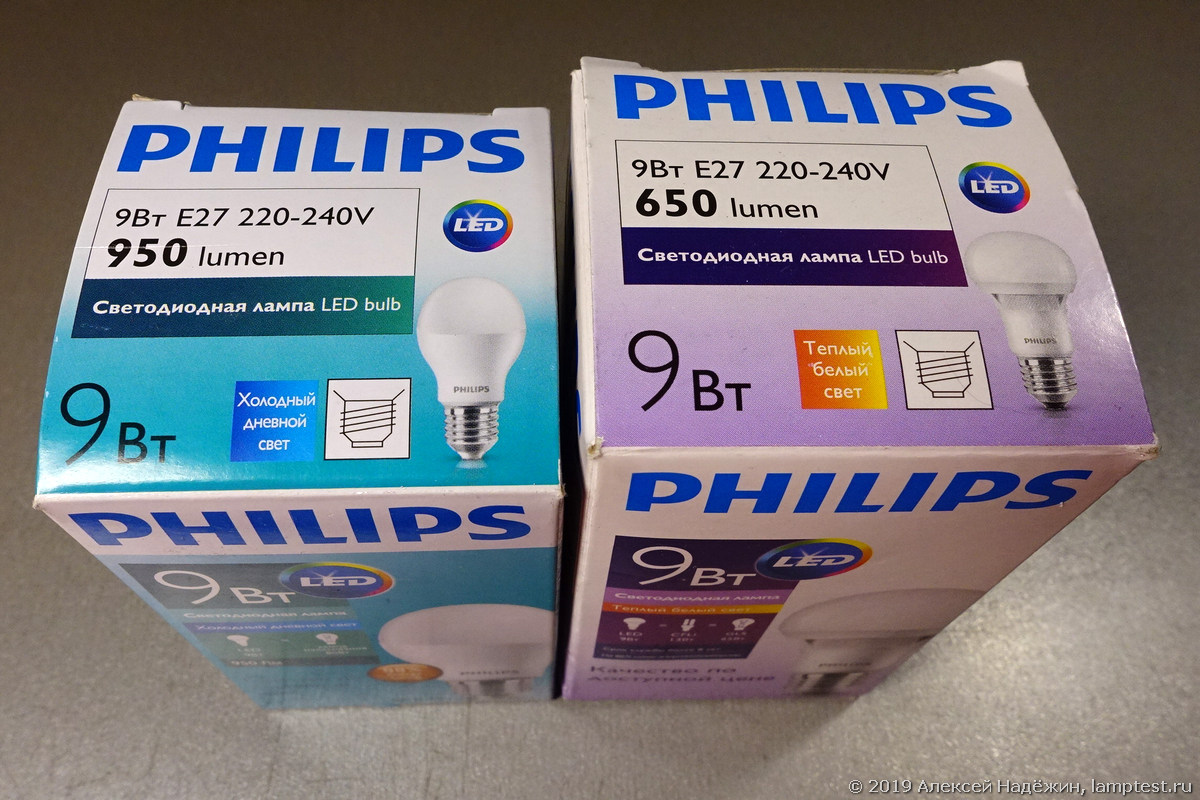
How can this be? You might think that there are LEDs of different generations, but no, everything is much simpler. For low-cost lamps, the manufacturer writes on the packaging more power than real, and for expensive ones, it is slightly less than real. In fact, the first "nine-watt" lamp consumes 9.4 watts, and the second only 7.3 watts. But in terms of luminous flux, everything is honest and even “with a margin" - 992 lm and 752 lm.

You probably noticed another unpleasant feature of the cheap series: the color rendering index of the EcoHome lamp is only 75 (it is believed that for residential premises it should be at least 80). You can’t find these lamps on the site, but if you drive their barcodes into Google’s search, you can find pdf files with characteristics in the depths of the philips.com global site. In these “hidden behind seven seals” characteristics it is honestly written that the color rendering index of these lamps is only 70.
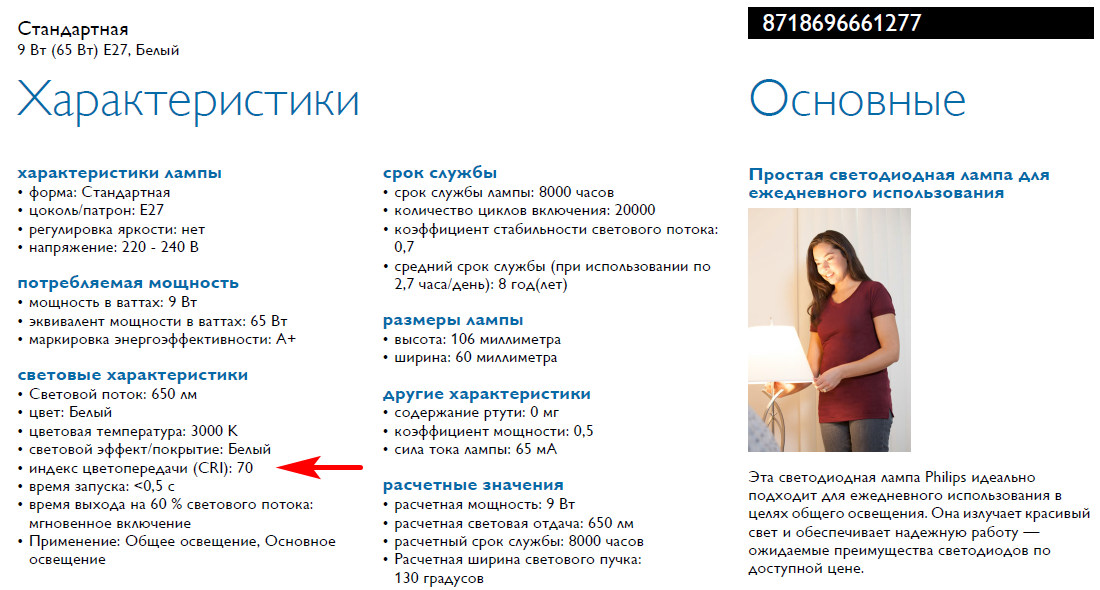
And you can also see where 8 years came from: this is 2.7 hours a day when working. And the service life of these lamps is declared 8000 hours. Color temperature is also indicated - 3000K.
Some EcoHome lamps have a color rendering index of more than 80, but this is how lucky - the manufacturer promises only 70.
Unfortunately, belonging to the series is not indicated anywhere on the packaging of the lamps. It can only be determined by the packaging design and the shape of the lamp - all EcoHome “pears” have the shape of a “fungus” with slots from the bottom.
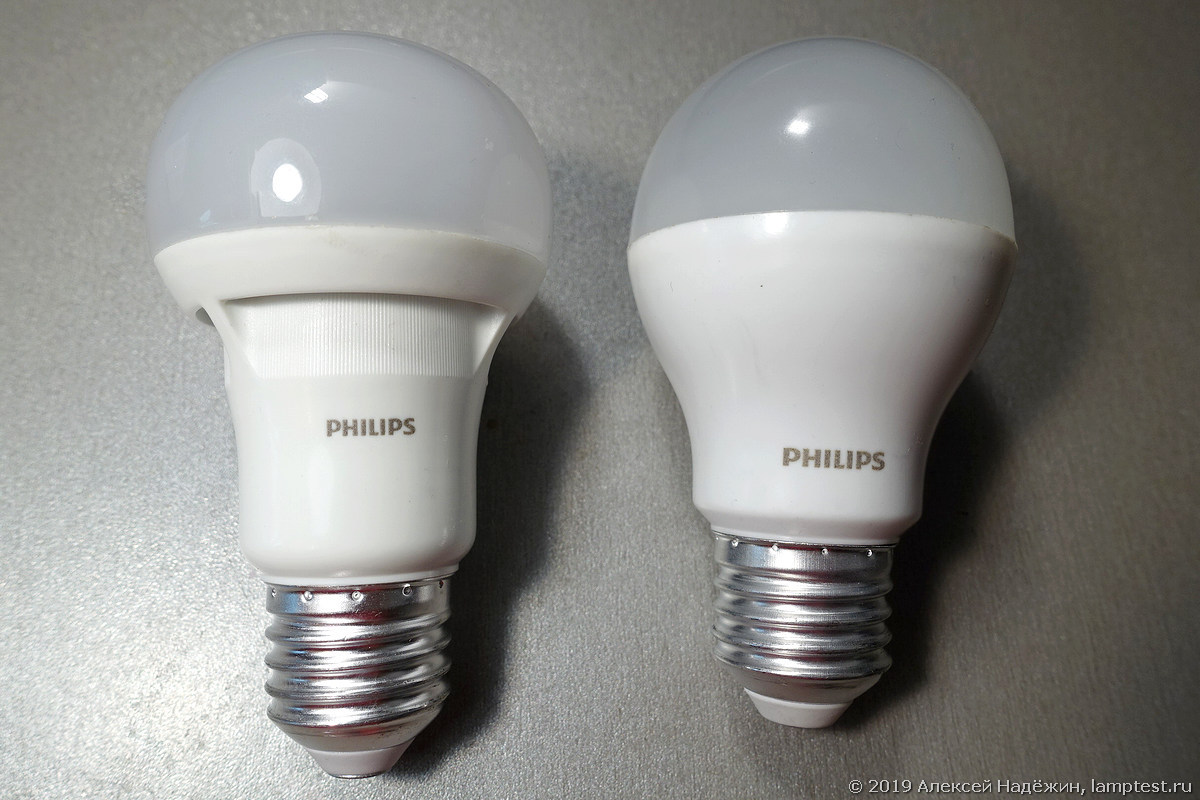
Unlike most Russian brands, Philips never lies with the luminous flux, but overestimates the power in a cheap series and is silent about the low color rendering index. Nevertheless, if you look at the results of measurements of Philips lamps on my website Lamptest.ru, you can see that most of the fields are green - the measured parameters correspond to the declared ones.
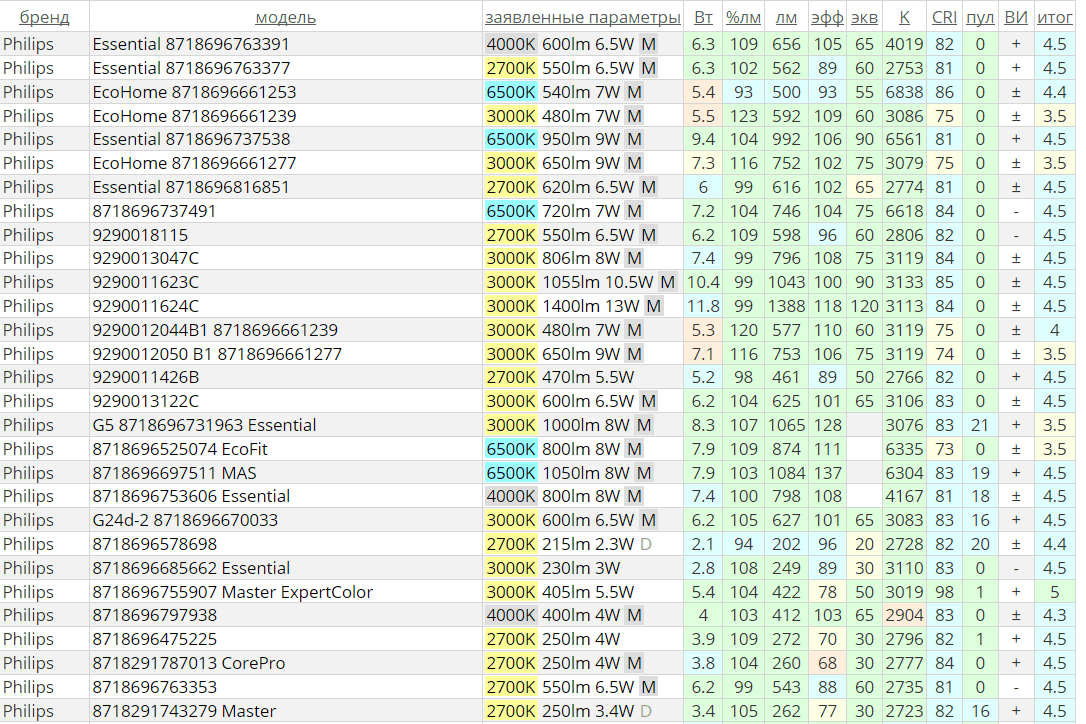
EcoHome lamps are now on sale in boxes of a new design, I will try to buy them and test them in the near future.
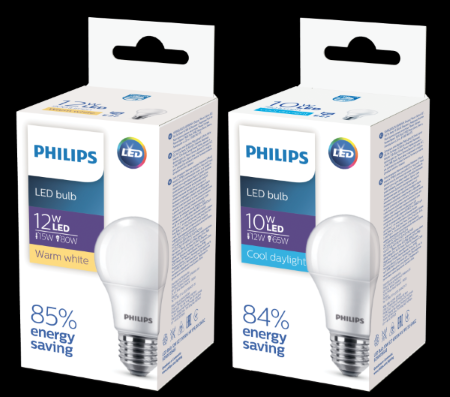
The conclusion from this is all simple. When choosing Philips lamps, look not at the power, but at the luminous flux and keep in mind that low-cost lamps may have a low color rendering index.
© 2019, Alexey Nadezhin
I’ll tell you how they differ.

Philips has traditionally very little box information. The first lamp in the photo shows only power, equivalent, luminous flux, operating voltage, “Warm white light” (without specifying color temperature), “Service life of more than 8 years” (without specifying under what conditions), “Minimum ripple level” ( without numbers). The sticker indicates the warranty period of 2 years. There is no information about the color rendering index on the package.
The manufacturer’s website also cannot find the exact specifications: there is only a part of the lamps, and many of the links are broken.
But on the site you can find that Philips has two series of lamps - a cheap “EcoHome” and a standard “Essential”. The first lamp in my photo from the EcoHome series, the second - Essential.
If you carefully study the information on the boxes, you will notice a strange thing: an expensive 9W lamp gives 950 lm, and a cheap one only 650 lm.

How can this be? You might think that there are LEDs of different generations, but no, everything is much simpler. For low-cost lamps, the manufacturer writes on the packaging more power than real, and for expensive ones, it is slightly less than real. In fact, the first "nine-watt" lamp consumes 9.4 watts, and the second only 7.3 watts. But in terms of luminous flux, everything is honest and even “with a margin" - 992 lm and 752 lm.

You probably noticed another unpleasant feature of the cheap series: the color rendering index of the EcoHome lamp is only 75 (it is believed that for residential premises it should be at least 80). You can’t find these lamps on the site, but if you drive their barcodes into Google’s search, you can find pdf files with characteristics in the depths of the philips.com global site. In these “hidden behind seven seals” characteristics it is honestly written that the color rendering index of these lamps is only 70.

And you can also see where 8 years came from: this is 2.7 hours a day when working. And the service life of these lamps is declared 8000 hours. Color temperature is also indicated - 3000K.
Some EcoHome lamps have a color rendering index of more than 80, but this is how lucky - the manufacturer promises only 70.
Unfortunately, belonging to the series is not indicated anywhere on the packaging of the lamps. It can only be determined by the packaging design and the shape of the lamp - all EcoHome “pears” have the shape of a “fungus” with slots from the bottom.

Unlike most Russian brands, Philips never lies with the luminous flux, but overestimates the power in a cheap series and is silent about the low color rendering index. Nevertheless, if you look at the results of measurements of Philips lamps on my website Lamptest.ru, you can see that most of the fields are green - the measured parameters correspond to the declared ones.

EcoHome lamps are now on sale in boxes of a new design, I will try to buy them and test them in the near future.

The conclusion from this is all simple. When choosing Philips lamps, look not at the power, but at the luminous flux and keep in mind that low-cost lamps may have a low color rendering index.
© 2019, Alexey Nadezhin
All Articles